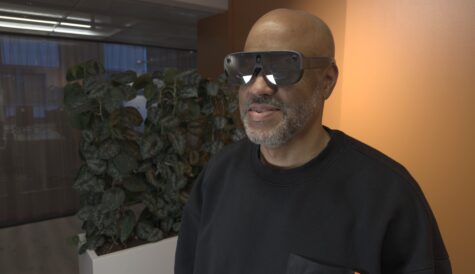
After more than 40 years of operation, DTVE is closing its doors and our website will no longer be updated daily. Thank you for all of your support.
Qualcomm unveils first dedicated VR and AR chipset
Mobile technology giant Qualcomm has unveiled what it describes as the world’s first dedicated ‘extended reality’ (XR) chipset in the run-up to the Augmented World Expo.
 Qualcomm’s Snapdragon XR1 platform is designed to open the way for manufacturers to create affordable dedicated virtual and augmented reality devices.
Qualcomm’s Snapdragon XR1 platform is designed to open the way for manufacturers to create affordable dedicated virtual and augmented reality devices.
The chipset is the first to be made by Qualcomm specifically for VR and AR devices rather than based on an existing mobile phone platform. The goal is to open the way for the creation of a broader range of affordable devices, the first of which should appear on the market next year.
According to Qualcomm, the XR1 is specially optimised for AR experiences with artificial intelligence capabilities offering better interactivity, power consumption and thermal efficiency.
Device manufacturers Meta, Vive, Vuzix and Picoare are already developing on the platform, according to Qualcomm.
While Qualcomm’s Snapdragon 845 platform is still likely to be preferred for VR and AR gaming, the XR1 is said by the company to be more optimised for lean-back experiences and viewing of 360° video.
The technology outfit said that the Xr1 would enable consumers to be immersed in heir favourite movies, programmes and sports by supporting 4K UHD video resolution at up to 60 frames per second for high-quality VR head-mounted displays
It also said that new dedicated hardware and software algorithms within its Qualcomm Spectra Image Signal Processor could help significantly reduce unwanted noise from snapshots producing a substantially improved final picture in AR headsets.
The integrated display processor provides a range of display options with hardware accelerated composition, dual-display support, 3D overlays and support for graphics APIs including OpenGL, OpenCL and Vulkan.
Qualcomm said that the XR1 also features advanced vision processing capabilities fundamental for technologies like Visual Inertial Odometry (VIO), which lets users move around in the virtual world or interact with augmented objects in an AR experience.
Other features include Qualcomm’s 3D Audio Suite, Qualcomm Aqstic Audio Technologies, and Qualcomm aptX Audio for high-fidelity audio experiences, and three- and six-degrees of freedom head racking and controller capabilities for XR devices.
“As technology evolves and consumer demand grows, we envision XR devices playing a wider variety of roles in consumers’ and workers’ daily lives,” said Alex Katouzian, senior vice-president and general manager, Mobile Business Unit, Qualcomm Technologies.
“By integrating powerful visuals, high-fidelity audio, and rich interactive experiences, XR1 will help create a new era of high-quality, mainstream XR devices for consumers.”


